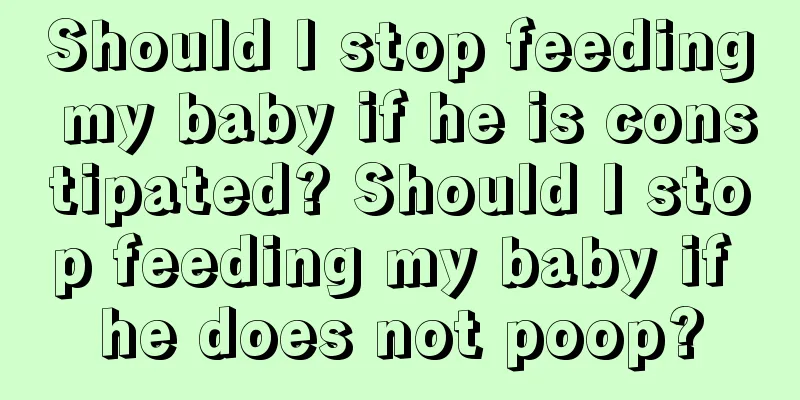Newborn pacifier with several holes 1 round hole suitable for newborns

|
1 round hole is suitable for newborns, because the milk can flow out by itself, which is suitable for the relatively weak sucking force of newborns. Moreover, the amount of milk flowing out of the round hole is not large and not very urgent. This can minimize the choking of newborns. Let's learn more about it below. How many holes does a newborn pacifier have?1 round hole is suitable for newborns. Round hole nipples are suitable for newborn babies, and milk can flow out automatically with a small flow rate. Cross hole nipples are suitable for children over 3 months old, and can adjust the amount of milk according to the child's sucking strength, with a larger flow rate. Y-shaped holes are suitable for children over 3 months old, with a more stable milk flow rate, and the Y-shaped hole is not as easy to break as the cross hole. Children of younger age should choose a smaller hole. If the milk hole is too large, it may cause the child to choke on the milk. Older children have a stronger sucking ability, so you can choose a bottle with a larger hole. How many types of nipple holes are there1. Small round hole (Size S): Suitable for newborns who cannot control the amount of milk. 2. Medium round hole (M): Suitable for babies aged 2 to 3 months who take too long to suck milk with size S. The amount of milk sucked out and the number of sucking movements made with this nipple are very close to those sucked out from the mother's breast. 3. Large round hole (size L): Suitable for babies who use the above two nipples to feed for too long but the amount is insufficient and who are light in weight. 4. Y-shaped hole: suitable for babies who can control the amount of milk they suck and play while drinking. 5. Cross-shaped hole: suitable for sucking juice, rice noodles or other coarse-grained drinks, and can also be used for feeding. How often should you change a newborn's pacifier?1. The life span of a pacifier is shorter than that of a bottle, and it may be easily damaged due to improper use or sterilization. Even if it is not changed, the bacteria accumulated on the pacifier is still worrying. Therefore, it is generally recommended to change the pacifier once a month, but it depends on the wear and tear of the pacifier. There are latex and silicone pacifiers. Silicone pacifiers do not have the odor of rubber, are easily accepted by babies, and are not easy to age, heat-resistant, and corrosion-resistant. 2. Silicone pacifiers usually have a service life of about 2 months. Latex pacifiers are made of natural rubber, which is very close to the nipple and soft. Babies like them more, but they usually need to be replaced after 3-4 weeks of use. If they are used for too long, they will easily age and produce a rubber smell. However, they still need to be replaced in several stages. The first stage is used for 3 months, the second stage is from 3 months to 6 months, and the third stage is more than 6 months. The main reason is that the opening of the pacifier is different. The baby grows up day by day, and the pacifier needs to be replaced as the milk supply increases. 3. When feeding their babies, mothers should check whether the nipple is damaged. If it is damaged, they should replace it immediately, because a damaged nipple is harmful to the baby, so mothers should always pay attention to this. Secondly, the baby's milk bottles, nipples and other milk utensils should be sterilized regularly. In this way, mothers can also let the baby continue to use the nipple with more confidence. How to sterilize a pacifier1. Prepare a stainless steel pot and fill it with cold water. The depth of the water should completely cover the milk bottles. Note: The pot must be used exclusively for sterilizing milk bottles. It is best not to mix it with other cooking foods at home. 2. After removing the nipple and bottle cap, put the bottle into the pot and boil it. Note: Plastic bottles are best put into boiling water, while glass bottles can be put into non-boiling water. 3. After the water boils for 5 to 10 minutes, put in the nipple, bottle cap, etc., cover the pot and boil for another 3 to 5 minutes before turning off the heat. Plastic bottles should not be boiled for too long, so put in the nipple immediately after the water boils and boil for another 3 to 5 minutes. 4. After the water has cooled, use a bottle clip to take out the nipple, bottle cap, etc., place them upside down on a clean container to dry, place them in a ventilated, clean place, and cover them with gauze or a lid) |
>>: When is it best to shave the baby's hair if the baby is over three months old?
Recommend
Can I eat shepherd's purse during breastfeeding? Will eating shepherd's purse during breastfeeding reduce milk production?
What breastfeeding women eat not only affects the...
Make good use of parental influence to grow with your children
Are there any rules for freedom? What is the role...
How to use femfresh care solution, gentle and non-irritating care solution
Femfresh care solution is a care solution that ca...
What is the best time for a baby to be born? These 4 hours are lively and cute
First, 1:00-3:00, lively and sensible. Second, 7:...
Symptoms of infant flatulence and treatment of flatulence in infants
It is normal for babies to have flatulence. Becau...
How long should you drink brown sugar water after giving birth? How much brown sugar water should a pregnant woman drink a day?
Drinking brown sugar water after childbirth is a ...
Can pregnant women eat wontons? It’s best to make them yourself
Pregnant women can eat wontons, but if they want ...
Baby spits out milk from the nose. What is going on? Baby spits out milk from the nose.
It is very normal for babies to spit up milk. Man...
Why does body odor become heavier after pregnancy? 3 factors make you smell like a pregnant woman
Pregnancy is a sacred thing for every woman. It c...
Can babies with eczema be vaccinated? Is it necessary for babies to get imported vaccines?
After the baby is born, in order to enhance its o...
How long is the shelf life of toothpaste? What are the dangers of expired toothpaste?
Toothpaste is a very common product on the market...
Is childbirth like breaking a bone? The pain of childbirth is not that exaggerated
When talking about childbirth, many female compat...
What flavors does Shuke toothpaste have? Can Shuke toothpaste reduce inflammation?
It seems that Shuke toothpaste has more than one ...
Can a flatulence patch be used on a newborn baby with flatulence? What kind of navel patch can be used on a newborn baby with flatulence?
Newborn bloating is a common phenomenon, mostly c...
How to treat children's rhinitis? Can children's rhinitis be eradicated? Is it incurable?
Rhinitis is a troublesome disease because it is d...









